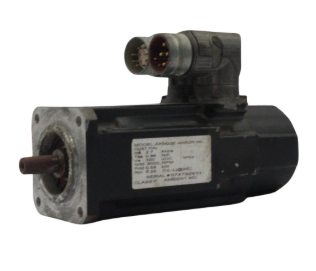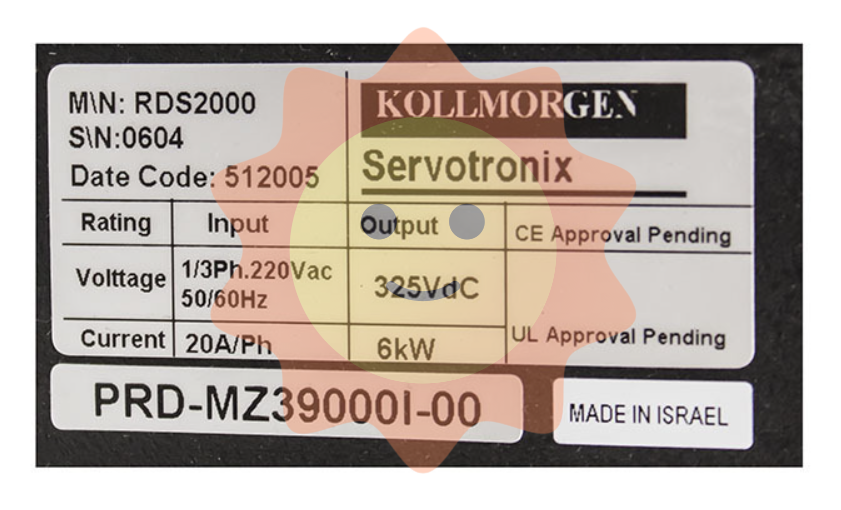How big is the pressure on carbon emissions in the chemical industry?
The total carbon emissions of the chemical industry are limited but the intensity is outstanding: at present, China's annual carbon dioxide emissions reach 10 billion tons, of which the chemical industry emissions are less than 500 million tons, far less than the major emissions of electricity, steel, cement, etc., from the total point of view, the chemical industry is not the first to bear the brunt. However, from the perspective of intensity, the emission per unit income of chemical industry is higher than the average level of industrial industry; In addition, different regions face differentiated pressure due to different economic structure, energy structure and development level. In the process of decomposition of total emission control targets in regional and industry dimensions, the chemical industry may face development shackles from carbon emissions in some regions.

Industrial process emissions are important sources of carbon emissions: carbon emissions can be roughly divided into two categories from the generation mechanism, energy-related emissions and industrial process emissions. The former is mainly the carbon emissions caused by the direct combustion of fossil energy; The latter is not related to energy consumption, but to emissions from specific chemical reactions, such as the decomposition of limestone in the production of cement glass, and the conversion of synthetic gas to hydrogen. With the advancement of renewable energy alternatives in the future, energy-related emissions will be greatly reduced, and process emissions may become the core factor determining the carbon emission pressure of products. At present, the process emission of cement accounts for about 75% of the total process emission in China and is the main source of process emission. However, the unit process emissions of the chemical industry can not be underestimated, the process emissions of carbon 1 and carbon 2 main products can reach more than 50% of the whole process emissions, and its core comes from the conversion process of hydrocarbon, that is, the reaction of CO and water to produce hydrogen, and the disadvantage of coal with the lowest hydrogen content is the most obvious. One ton of coal-based olefin process emissions can reach 6 tons of CO2, if the current EU price of 40 euros/ton of CO2 emissions will be internalized, will account for nearly 20% of the product price. Because of the "defects" of the raw materials themselves, the coal chemical industry has the "original sin" of high emissions, which can also explain why the market listed the coal chemical industry as the object of supply-side reform in the previous period. However, we believe that the necessity of industrial upgrading under carbon neutrality is beyond doubt, but it is not a stroke of death, and leading enterprises with advance layout to improve efficiency and reduce emissions have sufficient living space and development initiative.
Leading companies have the right to development under the carbon neutral goal: Even without a "carbon neutral" framework, leading companies are actually constantly building a capacity base for reducing consumption and emissions. The problem of emission in the process of energization is actually the utilization rate of carbon atoms, that is, the utilization rate of raw materials; Although it is difficult to reverse the reaction mechanism in the short term from the disadvantages of coal chemical industry, the unnecessary loss of carbon atoms can be minimized by improving the utilization efficiency of materials, including syngas, which comes from a deep understanding of the process. For example, Hualu has realized the high-load and long-period operation of the device, and the interconnection of the three platforms has improved the utilization rate of synthetic gas. For example, Baofeng Energy invested 1.4 billion yuan in the construction of solar water electrolysis project last year, coupled with the hydrogen demand of coal chemical industry to reduce process emissions. Seeing that the measures taken by advanced enterprises are not aimed at the current policy, but have consciously carried out advance layout, and they are still the most vitality and the right to development in the short, medium and long-term dimension in the future.

1. Chemical industry in the context of carbon neutrality
Carbon neutrality is undoubtedly one of the most topical topics in the capital markets these days. In fact, the proposal and landing of China's carbon reduction target is not a sudden attack, but has experienced a continuous process of advancement. "Reaching the peak" is not achieved overnight, and "neutralization" is not built in a day. In 2009, China for the first time put forward the quantitative target of reducing carbon dioxide emissions per unit of GDP by 40% to 45% in 2020 compared with 2005. From intensity targets to total targets, from peak to net zero, the evolution of emission reduction targets to higher levels of difficulty has witnessed China's long-term and sustained investment in addressing climate change. In September 2020, at the General debate of the 75th session of the United Nations General Assembly, China put forward the goal of reaching a carbon peak by 2030 and achieving carbon neutrality by 2060. This is not only China's solemn commitment to shoulder the responsibility of a major country to achieve the ambitious goal of addressing climate change and leading global climate governance, but also has a profound impact on the development trend of domestic industry and investment logic. The benefits of carbon neutrality on emerging industries, including new energy, are simple to understand, but the impact on traditional industries is difficult to generalize, especially for the high-energy-consuming industry in the traditional sense of chemical industry, which is interpreted by the market as another round of supply-side reform, but who is the object of "reform"? Especially recently, Inner Mongolia announced that in addition to some exempted projects, it will no longer approve modern coal chemical projects during the "14th Five-Year Plan" period, which has intensified the market's concerns about the future of the chemical industry, especially the coal chemical industry. We believe that the characteristics of carbon emissions in the chemical industry can be summarized as follows: 1) the total amount of emissions is limited but the intensity is prominent. 2) The emission pressure of coal chemical process is relatively large, but leading enterprises with advance layout of efficiency improvement and emission reduction have sufficient living space and development initiative.
2. Characteristics and accounting methods of chemical carbon emissions
At present, China's annual carbon dioxide emissions have reached 10 billion tons, and the carbon emissions of the chemical industry (petroleum processing and coking industry and chemical raw materials and chemical products manufacturing) are less than 500 million tons, far less than the major emissions of electricity, steel, cement, etc., that is to say, from the total point of view, chemical industry is not the first industry. However, from the perspective of intensity, the carbon emission per unit income of chemical industry is higher than the average level of industrial industry; And different regions due to the different economic structure, energy structure and development level, face differential pressure, so that the chemical industry in some areas may meet the development of carbon emissions shackles.

2.1 Limited total emissions
First of all, from the perspective of the total carbon emissions of the whole society, the total global carbon dioxide emissions in 19 years reached 34.2 billion tons, and China's emissions reached 9.8 billion tons. With China's economic development, the proportion of China's carbon emissions has increased simultaneously, especially after China's accession to the WTO, the growth rate of emissions has reached an inflection point, and the growth rate is 2.5%, faster than the global average. At present, China accounts for nearly 30% of global emissions, and has become the world's largest carbon emission country. China's achievements in building a moderately prosperous society in an all-round way and eliminating poverty are obvious to all, but the issue of carbon emissions has always been the focus of the tussle between China and Western developed countries over the right to future development. In this context, China's initiative to peak and net zero, the necessity and foresight of grasping the initiative of climate management is obvious.
From the mechanism of carbon emissions, emissions can be roughly divided into two categories: energy-related emissions and industrial process emissions. The former is easier to understand, the main thing is the carbon emissions caused by the direct combustion of fossil energy, according to the different accounting boundaries will also include the emissions of purchased electricity and heat; The latter has nothing to do with energy consumption, but the emissions generated by specific chemical reactions, such as limestone decomposition and escape in the production of cement glass, metal smelting, synthetic gas conversion to hydrogen production, etc., of which cement production process emissions account for about 75% of China's total industrial process emissions.
From the perspective of China's primary source of carbon emissions, coal accounts for 75% of the share, followed by oil, process emissions and natural gas. From the perspective of primary energy consumption structure, coal accounts for only 58%, indicating that the unit emission intensity of coal is also higher than the average water level of primary energy. The resource situation of "rich coal, less oil and gas shortage" and the high unit emissions of coal have led to the downstream coal industry becoming the focus of China's carbon reduction work.
Based on the highly authoritative CEADS database of the academic community, we analyzed the emission structure of domestic sub-sectors. The original data package included 47 national economic industries, 17 fossil energy combustion emissions and 1 process emissions. It is worth mentioning that for process emissions, the CEADS database only considers the emissions related to cement production, while the process emissions caused by fossil energy input conversion are mainly included in the energy source correlation. From the perspective of the terminal sector that produces carbon emissions, the carbon emissions of China's industrial sector (excluding the power and heat sector) in 2017 were 3.67 billion tons, accounting for 39% of the total emissions, and it is the second largest carbon emission industry after the power and heat field. Further within the industry sector, the carbon emissions of the chemical industry (petroleum processing and coking industry + chemical raw materials and chemical products manufacturing) are about 400 million tons, accounting for only 10.2% of the total industrial emissions and 4% of the total domestic emissions. Carbon emissions in the industrial field are mainly from non-metallic minerals and ferrous metal smelting, which directly accounts for 78% of the total industrial carbon emissions and 30% of the total domestic carbon emissions.
At the same time, combined with the energy structure of carbon emissions and downstream consumption, coal consumption as the main carbon emissions, 73% of its energy consumption is used for electricity and steel, and chemical consumption only accounts for 8%. The proportion of chemical industry in the downstream consumption structure of crude oil and natural gas is 49% and 10%. Therefore, from the perspective of the total emission and proportion of the national dimension, the emission contribution of the chemical industry is very limited.

2.2 Prominent emission intensity
Although from the national dimension, the total carbon emission contribution of the chemical industry is not large, but at the regional level, due to the difference in regional economic structure, energy structure and development level, it still faces differential pressure. In particular, Inner Mongolia, a large coal province, was criticized in February by the National Development and Reform Commission for failing to complete the "dual control" assessment of total energy consumption and intensity. Based on the above-scale income and energy consumption of industry and its subdivision chemical industry in the statistical yearbook of some provinces and cities, we simply calculated the energy consumption and carbon emissions corresponding to each 10,000 yuan income.
The carbon emissions per unit of energy consumption were calculated by using the consumption ratio of coal, crude oil and natural gas in each province and city to establish the conversion from energy consumption data to carbon emissions. Based on the newly released indicators of energy consumption reduction rate per 10,000 yuan of regional GDP by province (autonomous region and city), we selected the three worst-performing provinces and cities (Inner Mongolia, Ningxia and Liaoning) and the three best-performing provinces and cities (Beijing, Hebei and Gansu), and compared them with the national estimated data. First, from the perspective of unit emissions of the industry, the carbon emissions per unit income of the chemical industry are higher than the average level of the industrial industry. Secondly, in terms of regional differences, for provinces and cities with poor performance of 10,000 yuan energy consumption index, the carbon emission cost per unit income is also significantly higher. Therefore, from the perspective of emission intensity, the chemical industry still faces certain challenges in emission reduction, and the regional differences are very obvious.
2.3 Carbon emission measurement methods of chemical products
In general, the chemical industry emissions have the characteristics of limited total amount but outstanding intensity. And because of the wide range of products in the chemical industry, clearing the core processes that generate carbon emissions is important to identify future risks and opportunities. The first step is to identify the sources and accounting methods of carbon emissions in the chemical industry. The establishment of our carbon emission inventory is based on algorithms rather than online monitoring and is consistent with the international standards of the IPCC. According to China's official carbon emission accounting guidelines, the sources of carbon emissions in chemical production can be mainly subdivided into five aspects, which are fuel combustion emissions, exhaust gas flare combustion emissions, industrial production process emissions, CO2 recovery and utilization, and CO2 emissions implicit in net purchased electricity and heat. In this paper, emissions from fuel combustion and implicit emissions from net purchased electricity and heat are classified as emissions from public works, emissions from industrial production processes are listed separately, and emissions from flare combustion of waste gas and CO2 recovery and utilization (except synthetic urea consumption) are not considered.

2.3.1 Discharge from utility projects
The utility project emissions of chemical enterprises are mainly energy-related emissions. Energy consumption in the production process can be primary energy and secondary energy sources. Different fuels emit different amounts of carbon during combustion. Electricity is a secondary energy, but because the process of generating electricity still requires the fuel combustion of the power plant, in the accounting guide, electricity also has a carbon emission coefficient, in this paper we use the Beijing 2020 new standard 0.604 tons of CO2/MWh calculation. Generally, we refer to fuel combustion emissions, electric/thermal implied carbon emissions and torch combustion emissions as utility emissions. In this paper, we focus on the calculation of fuel combustion and electric/thermal implied carbon emissions.
2.3.2 Emissions from industrial processes
The calculation of process carbon emissions is based on the principle of conservation of material mass. The 2006 IPCC Guidelines for National Greenhouse Gas Inventories assume that all the C element lost in process emissions is converted into CO2 emission. The carbon content difference between raw materials and products (including secondary products) is the CO2 emission during the production of the product. Process emissions and utility emissions together make up all carbon emissions from chemical preparation.
In addition, since overseas oil and gas routes are mainly used, the process is mature and there are complete process emission data, so we can directly use the IPCC and EU published oil and gas route emission factors to directly calculate. For important coal chemical routes in China, we will supplement the more detailed carbon emission calculation process.
3. Carbon emission calculation of typical chemical products
In this chapter, we will calculate the unit carbon emissions of several important types of chemical products in more detail to sort out the main sources of carbon emissions in major chemical production processes and chemical products with high environmental costs. The three paths are mainly competitive in the fields of C1 and C2. C3 is mainly propylene, similar to C2 ethylene is no longer a single column. For the two core sources of carbon emissions, energy-related emissions can be significantly reduced or even reduced to zero through power substitution in the future, but process emissions are different due to the reaction mechanism and conversion efficiency. The carbon emission caused by hydrocarbon conversion is the most important process emission in the production process of chemical products.

3.1 How to understand the process emissions of energy chemical industry
Because coal is mainly composed of carbon elements, the hydrogen-carbon molar ratio is only about 0.2 to 1, and a part of C needs to be sacrificed to replace hydrogen from other raw materials, and the carbon conversion rate is not as good as oil and gas. From the point of view of the specific reaction process, coal is converted into gas through the coal gasification process and then the subsequent preparation task. In an ideal water-gas preparation reaction, one part of C and water becomes one part of CO and hydrogen. However, this reaction process is a strong endothermic reaction, which does not exist alone in the actual coal gasification process, but must be combined with another carbon oxidation exothermic reaction to heat this process. These exothermic reactions consume C, but do not displace an equal proportion of hydrogen from the water molecules, resulting in a final product with a hydrogen ratio greater than 1, and even some CO2. In addition, taking methanol, an important chemical intermediate product, as an example, the ratio of hydrocarbon in its raw material is as low as 0.5, and the consumption of hydrogen is significantly greater than that of CO. Therefore, a conversion reaction is often added after the coal gasification process to adjust the ratio of CO and hydrogen. In this process, one part of CO and water molecules are consumed, and one part of hydrogen and CO2 are produced. These are the main sources of CO2 process emissions in coal chemical routes. On the other hand, the hydrogen-carbon ratio of oil is 1.6-2, the hydrogen-carbon ratio of natural gas is above 2, and the hydrogen content is significantly higher than that of coal. Taking the C1 chemical industry of natural gas as an example, because the hydrogen carbon ratio of methane itself reaches 4, from the core reaction equation, the ratio of H2 and CO generated by the first step of steam reforming to synthesis gas is as high as 3 times, which is far greater
- EMERSON
- Honeywell
- CTI
- Rolls-Royce
- General Electric
- Woodward
- Yaskawa
- xYCOM
- Motorola
- Siemens
- Rockwell
- ABB
- B&R
- HIMA
- Construction site
- electricity
- Automobile market
- PLC
- DCS
- Motor drivers
- VSD
- Implications
- cement
- CO2
- CEM
- methane
- Artificial intelligence
- Titanic
- Solar energy
- Hydrogen fuel cell
- Hydrogen and fuel cells
- Hydrogen and oxygen fuel cells
- tyre
- Chemical fiber
- dynamo
- corpuscle
- Pulp and paper
- printing
- fossil
- FANUC
- Food and beverage
- Life science
- Sewage treatment
- Personal care
- electricity
- boats
- infrastructure
- Automobile industry
- metallurgy
- Nuclear power generation
- Geothermal power generation
- Water and wastewater
- Infrastructure construction
- Mine hazard
- steel
- papermaking
- Natural gas industry
- Infrastructure construction
- Power and energy
- Rubber and plastic
- Renewable energy
- pharmacy
- mining
- Plastic industry
- Schneider
- Kongsberg
- NI
- Wind energy
- International petroleum
- International new energy network
- gas
- WATLOW
- ProSoft
- SEW
- wind
- ADVANCED
- Reliance
- YOKOGAWA
- TRICONEX
- FOXBORO
- METSO
- MAN
- Advantest
- ADVANCED
- ALSTOM
- Control Wave
- AB
- AMAT
- STUDER
- KONGSBERG
- MOTOROLA
- DANAHER MOTION
- Bently
- Galil
- EATON
- MOLEX
- Triconex
- DEIF
- B&W
- ZYGO
- Aerotech
- DANFOSS
- KOLLMORGEN
- Beijer
- Endress+Hauser
- MOOG
- KB
- Moxa
- Rexroth


Email:wang@kongjiangauto.com


































































































